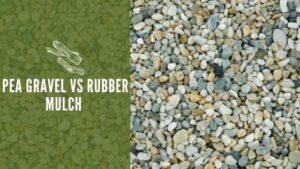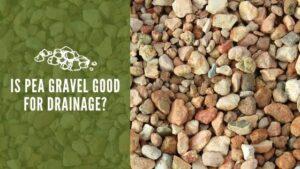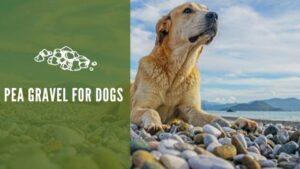Pea Gravel Alternatives

Choosing the right material for your landscape is an important decision. You want something that has the aesthetics you prefer, but you also need to consider drainage properties and other factors that affect the types of plants you can select. Pea gravel is a popular material for many landscape projects. Let’s look at its pros and cons, as well as some alternatives.
Pros and Con of Pea Gravel
Every landscape material you choose has advantages and disadvantages. Here are some of the pros and cons to consider regarding pea gravel.
Pea Gravel Pros
One of the pros of pea gravel is its natural look that many people prefer. Pea gravel comes in a range of beautiful buff and light brown colors perfect for patios and walkways. Another pro is that it is relatively inexpensive compared to other material choices. All the pieces are uniform, and they have smooth, round edges that are soft to walk on.
Pea Gravel Cons
You have to rake pea gravel to keep it looking smooth, so it is not maintenance-free. Also, if you use it in an area that gets heavy traffic, it can break down and become fine sand. This gravel sand compacts and becomes a barrier on the bottom that prevents drainage. In areas that get heavy traffic, you will need to top it up from time to time.
Pea Gravel Alternatives
Pea gravel has many advantages over other types of stone regarding aesthetics and price, but it also has a few considerations that might have you wondering what some good alternatives would be.
#4 Base Stone
One choice for a base material is #4 base stone. This is a combination of crushed stone, dirt, and sand. It can be made of various materials, including recycled concrete, bricks, limestone, and common gray gravel. It has large pieces about an inch and a half across, but it is not the best for walking.
Crushed Stone
Crushed stone is another alternative and is considered the best gravel for drainage. It has sharp angles and does not tend to compact or stick together as badly as pea gravel. It is not the best choice for providing a comfortable surface for walking, and it is not the most attractive option.
Lava Rock
Lava rock is another option, but it can be one of the more expensive ones. It is attractive and lightweight, but it does tend to wash away when you get significant amounts of water. Many people love the look of lava rock, and it has excellent drainage properties. The rich colors make an excellent backdrop for lush green plants.
River Rock
River rock is another alternative similar to pea gravel in many ways. One of the main differences is that it tends to be lighter weight and might wash away more easily. It also has a mix of sizes and has not been screened for uniformity. The mix of large and small pieces gives it excellent drainage, and many people choose to use it as a middle layer between base gravel and pea gravel on top.
Other Top Layer Choices

You might use other types of stone as a base layer, but it is the top layer that people will see. Pea gravel is a popular option, but here are some other choices for attractive top layers. Many of them are more expensive than pea gravel, but they allow you to get the custom look you want.
- Pink quartz
- Marble chips
- Jersey Shore gravel
- Washed clean stone
- Crushed granite
Now you know the pros and cons of using pea gravel in your landscape. You also know several alternatives, but there are many others available. Pea gravel is often used in combination with other types of material, with pea gravel serving as the top layer for aesthetics and a soft feel underfoot.





